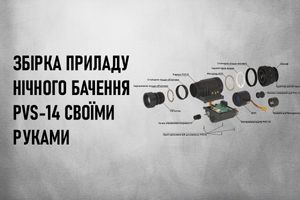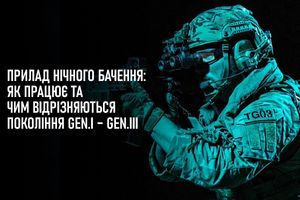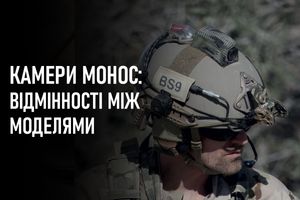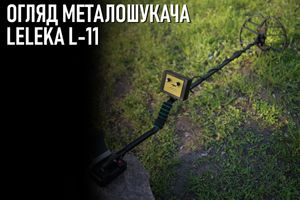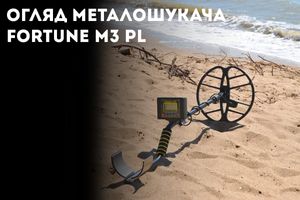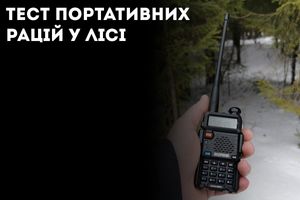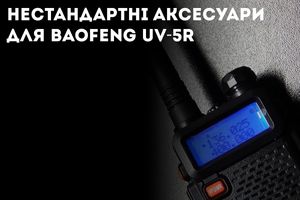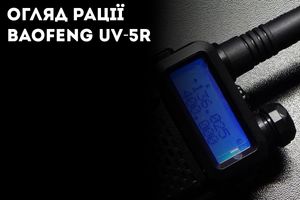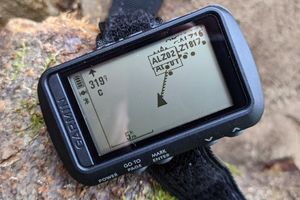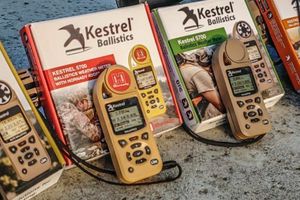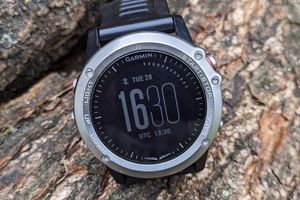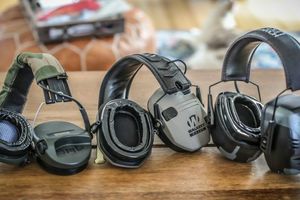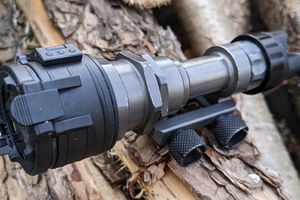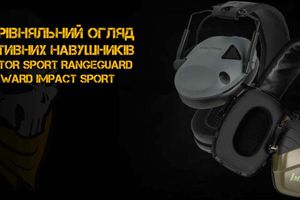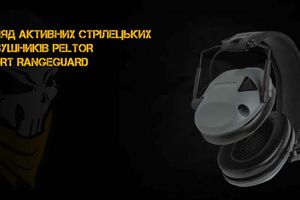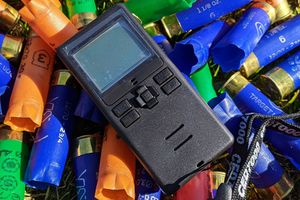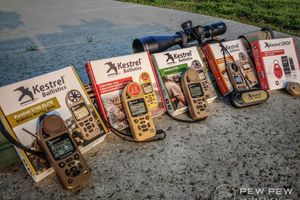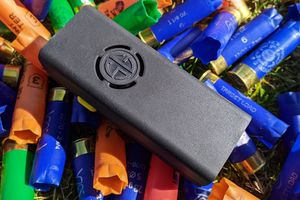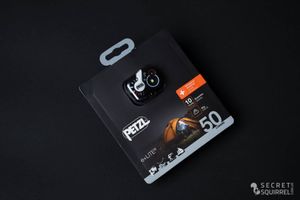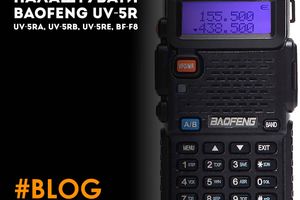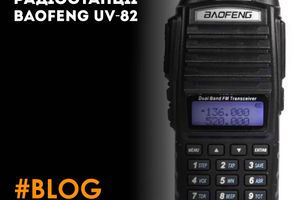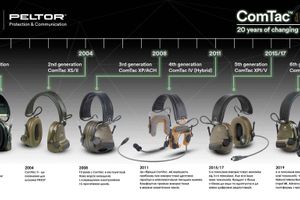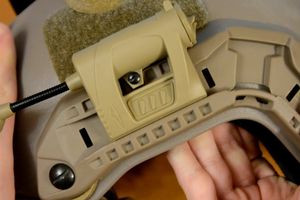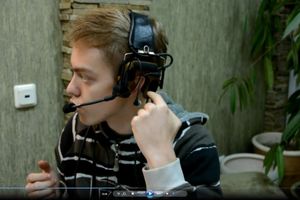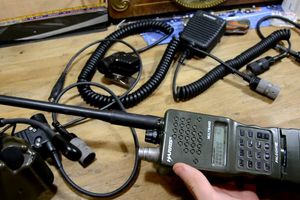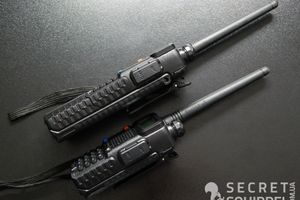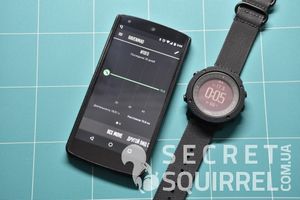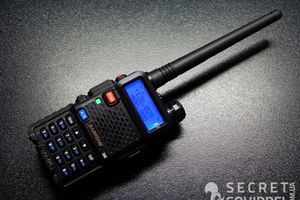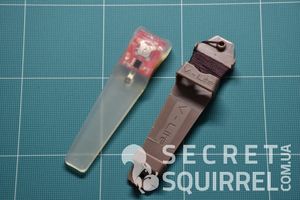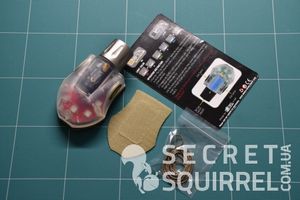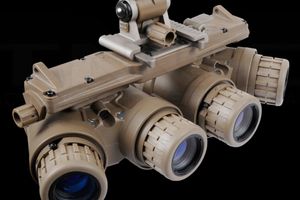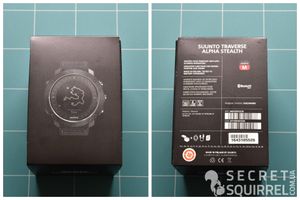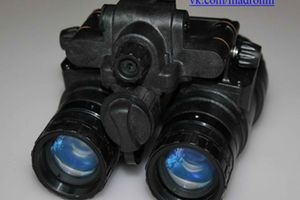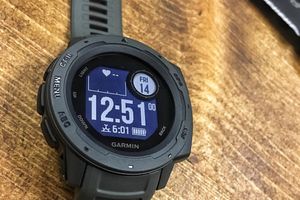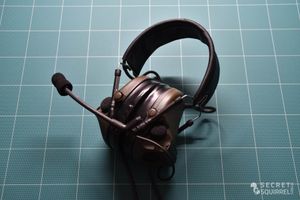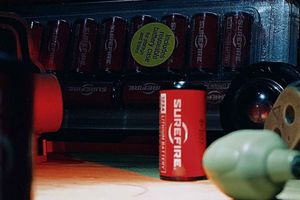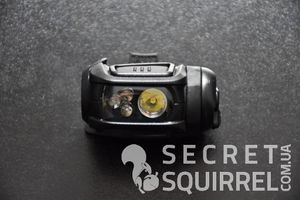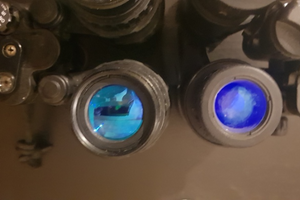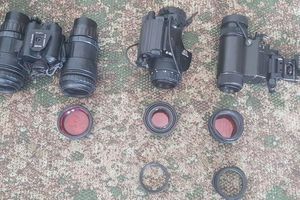We continue our series of posts about night vision devices. In this article we describe the most popular models on the US market and their specifications.
If you want to learn more about how night vision devices work, how IITs are classified by generation and their specifications, as well as about European-made night vision devices, read our previous article "Night vision device: how it works and the differences between generations I–III".
Quick navigation through the sections of the article:
Modern technologies in the NV operation
Bright light protection features
Specifications of individual NV models
ACTinBlack, Dual Tube Night Vision System (DTNVS)
Night Vision Devices, Inc. BNVD Binocular Night Vision Device – Single Gain
Introduction
Night vision devices allow users to see in low or no light conditions. The two main technologies used in these devices are image intensification and thermal imaging. Image intensification works in the visible and near infrared part of the electromagnetic spectrum. Thermal imaging works in the mid-wave and long-wave portions of the spectrum. Most image intensifiers have a built-in infrared (IR) illuminator that is manually activated because the devices require a small amount of light to operate. Some night vision devices utilize both image intensification and thermal imaging to help overcome the limitation of individual technologies.
To provide users with information about night vision devices, the Systems Assessment and Validation for Emergency Responders (SAVER) program conducted a market study of commercially available night vision devices. Information from the report is the basis for this article.
The survey included night vision devices that utilize 3rd generation tubes and can be mounted on the head or helmet to leave the user's hands free to perform tasks.
Night vision devices overview
NVs work in one of two ways:
-
image intensification — it works by collecting tiny amounts of light that are invisible to the human eye and require amplification to be easily seen; such devices are known as "I² devices".
-
thermal imaging — works in the part of the electromagnetic spectrum where energy is emitted by objects as heat rather than reflected as light.
Either technology can exist separately or can be combined into an integrated device.
I² sensors operate in the visible and near-infrared electromagnetic spectrum, while thermal imaging sensors operate in the mid-wave and long-wave infrared spectrum.
Modern technologies in the NV operation
An overview of all existing generations was discussed in detail in the previous article. However, the most commonly used devices nowadays are those with 3rd generation (Gen.3) image intensifier tubes (IIT).
I² sensors work by collecting available light through an objective lens, which captures visible light reflected from an object as well as light from the near-infrared part of the spectrum and focuses it onto a photocathode. The photocathode then turns the collected light into electrons, and this electrical energy is multiplied thousands of times by a microchannel plate (MCP). The electrical energy hits a phosphor-coated screen, which turns it into a bright image that a person sees through an eyepiece lens.
On a cloudy, moonless night or in a very dark room with little or no outdoor lighting, a visible image cannot be obtained by I² sensors. Therefore, many I² units have a built-in infrared light-emitting diode (LED) illuminator that is manually activated — it provides illumination over a short distance (approximately 3 meters). Additional illuminators such as IR flashlights can be used when longer range illumination is required.
In modern fixtures, white phosphor is increasingly replacing the familiar green phosphor. White phosphor provides a clearer image with greater contrast and improved depth perception, and its black and white image is closer to what the human brain is used to, resulting in less eye fatigue during prolonged use.
Bright light protection features
Earlier generations of spotting scopes could not be turned on in daylight, as this would destroy the EOP without the possibility of further repair. However, Gen.3 devices have a number of features that prevent damage in case of accidental activation in bright light (the availability of this or that feature is specified in the manual for a particular model of the device).
-
Automatic brightness control. Controls the voltage on the microchannel plate, adjusting its gain according to the amount of ambient light hitting the tube. "Gain" is the number of times the NVD amplifies the incoming light. It is usually measured as tube gain (fL/fc) or system gain (fL/fL).
-
Bright source protection. This function is also known as "bright light cutoff". It turns off the voltage to the photocathode when the device is exposed to bright light, preventing the IIT from being destroyed. This function is used to produce a normal image in bright light conditions in urban areas where streetlights and car headlights increase ambient light.
-
Autogating. Adjusts the power supply to create a rapidly fluctuating voltage across the photocathode. These variations prevent image whitening due to blooming and halos, making the devices more effective in urban environments. Blooming is a temporary loss of contrast in an image, resembling a smudged area. Halos occur when a bright light source appears in the field of view, causing rings to appear around it.
Night vision device types
-
Monoculars. Monocular devices have one eyepiece and one lens. These devices have low depth perception, which is a trade-off for allowing one eye to adapt to changing ambient light conditions to provide better situational awareness.
-
Binoculars. Have two eyepieces and two lenses, which improves comfort and depth perception.
-
Bioculars. Biocular systems have two eyepieces and one lens. These devices increase viewing comfort, but depth perception is barely improved.
-
Integrated devices. Overlay the thermal image on top of the I² image. An integrated device can be monolithic or created with a thermal imaging overlay. In an overlay system, a miniature thermal imaging device is attached to the I² NV and the thermal image is projected onto the lens of the NV without having to modify existing equipment.
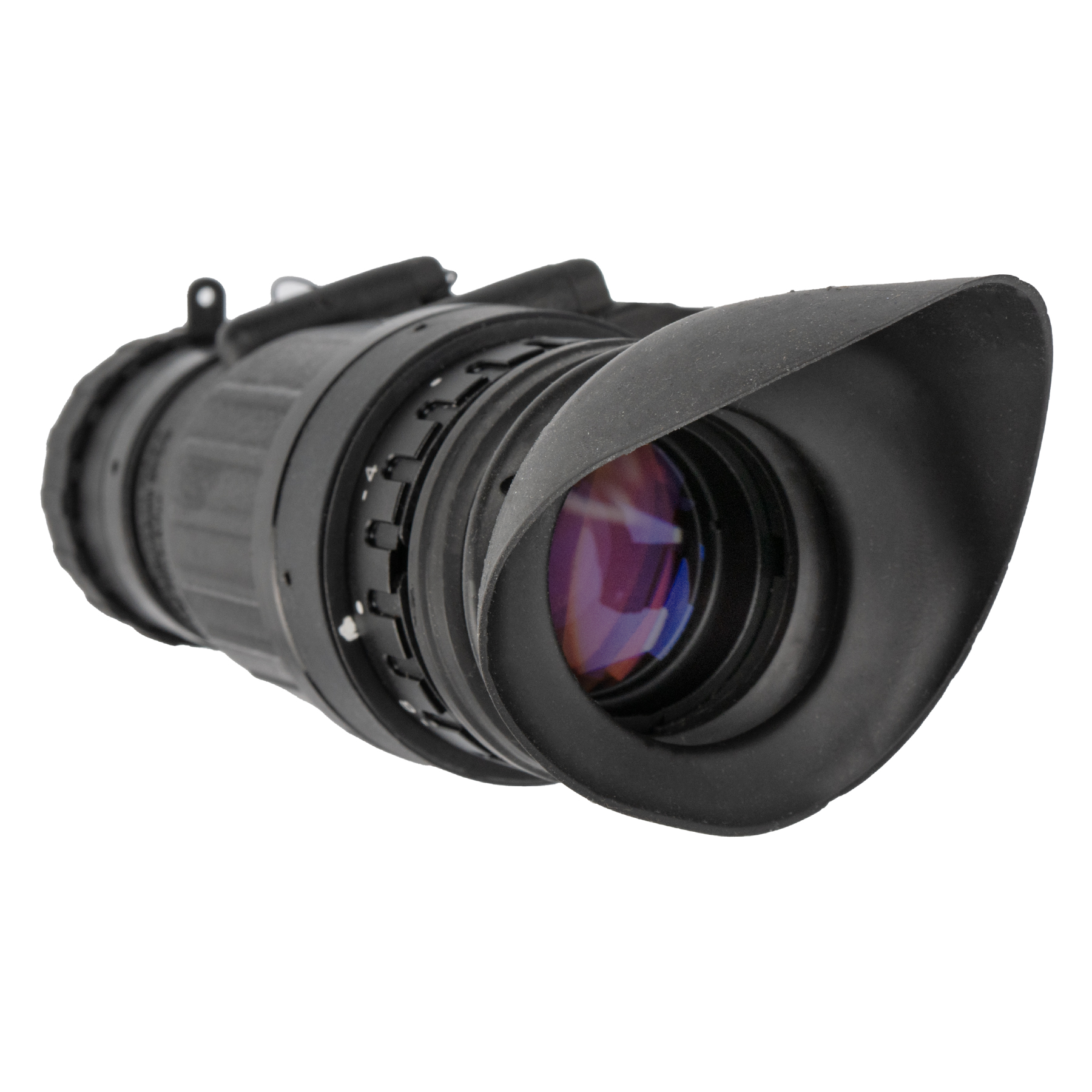 |
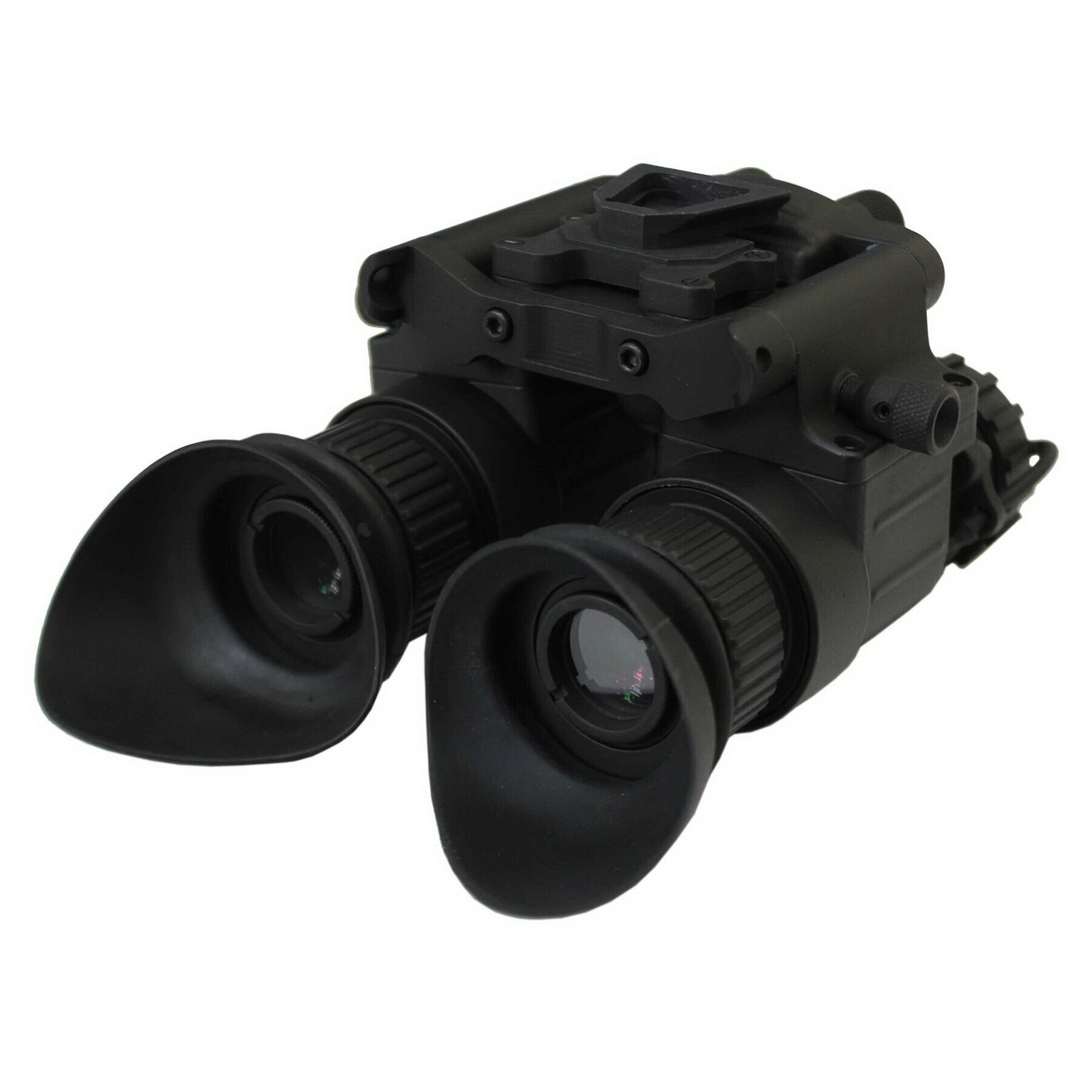 |
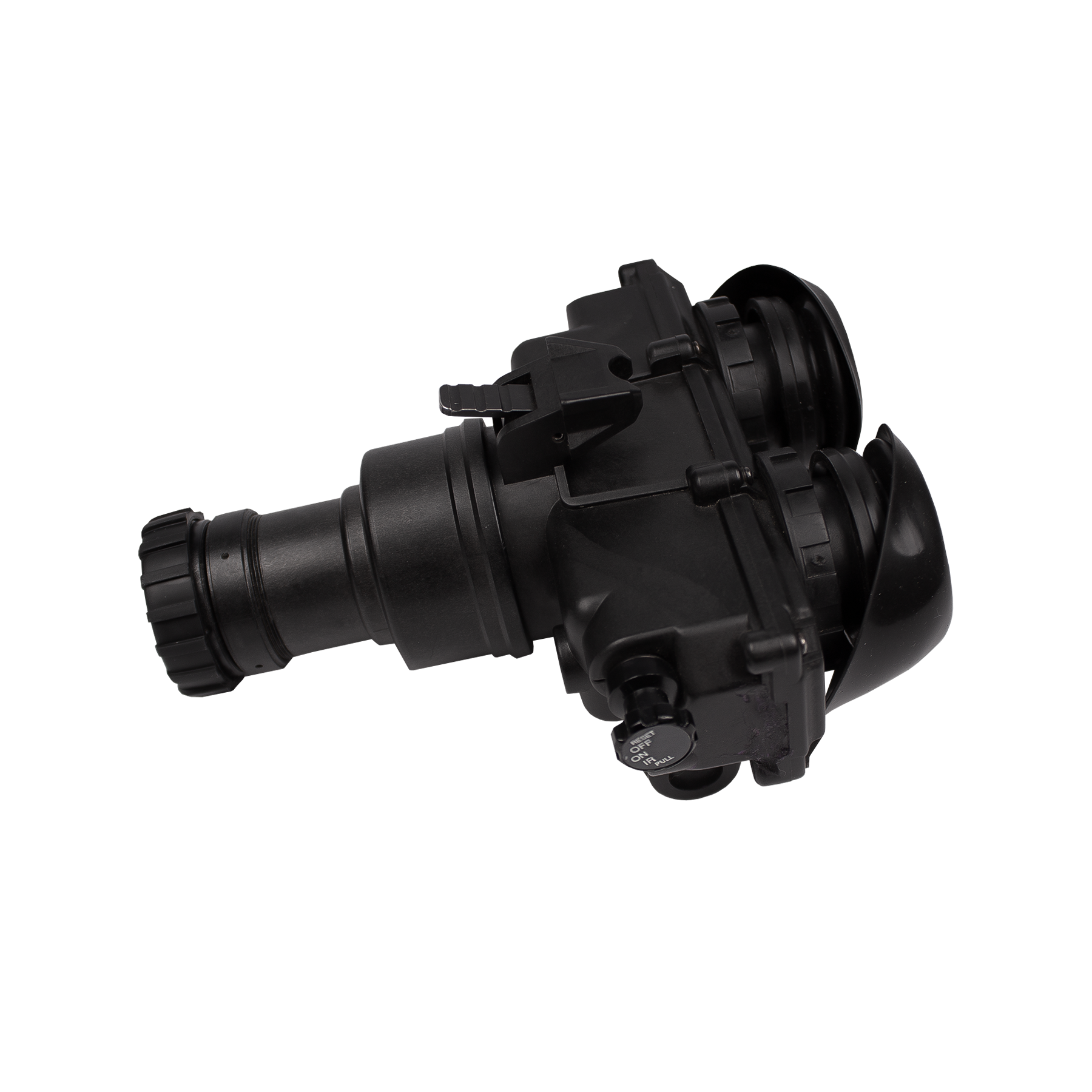 |
|
Monocular |
Binocular |
Biocular |
Fig. 1 — Types of night vision devices
Specifications of individual NV models
Table 1 summarizes the general specifications and data sheets of popular NV models from various manufacturers. The product information presented in this section has been obtained directly from manufacturers, suppliers, and their websites. This information has not been verified by the SAVER program.
Following the table are extended descriptions of individual models of night vision devices.
Table 1 — Specifications of popular NVD models
|
Vendor |
Product |
Dimensions, cm/inch |
Weight, g/lb |
FOV, degrees |
Focus Range, cm |
Resolution, lp/mm |
Diopter Adj. Range, diopters |
Battery Type |
Battery Life, hours |
|
Monoculars |
|||||||||
|
AGM Global |
PVS-14 |
11.4 х 6.4 х 6.9 / 4.5 x 2.5 x 2.7 |
322 / 0.71 |
40 |
25...∞ |
64 |
-6...+4 |
АА |
<50 |
|
ATN |
PVS-14 |
11.4 х 5.1 х 6.4 / 4.5 x 2.0 x 2.5 |
354 / 0.78 |
40 |
25...∞ |
64–72 |
-6...+2 |
AA |
50 |
|
ATN |
NVM14-3 |
11.9 х 4.8 х 6.8 / 4.7 x 1.9 x 2.7 |
318 / 0.7 |
40 |
25...∞ |
51–72 |
-6...+2 |
CR123A |
50–60 |
|
Carson Industries |
AN/PVS-14 |
11.4 х 5.1 х 5.7 / 4.5 x 2.0 x 2.25 |
363 / 0.8 |
40 |
25...∞ |
64 |
-6...+2 |
AA |
40 |
|
Elbit |
AN/PVS-14 |
11.4 х 5.8 х 6.1 / 4.5 x 2.3 x 2.4 |
355 / 0.783 |
40 |
25...∞ |
64–81 |
-6...+4 |
AA |
60 |
|
L3Harris |
AN/PVS-14 |
11.4 х 6.4 х 6.1 / 4.5 x 2.5 x 2.4 |
349 / 0.77 |
40 |
25...∞ |
64 |
-6...+2 |
AA |
48 |
|
PRG Defense |
PVS-14 |
11.2 х 6.1 х 6.1 / 4.4 x 2.4 x 2.4 |
318 / 0.7 |
40 |
25...∞ |
Н/Д |
-6...+4 |
AA |
50 |
|
Binoculars |
|||||||||
|
ACTinBlack |
DTNVS |
7.8 х 10.3 х 10.8 / 3.07 x 4.05 x 4.25 |
від 415 / 0.915 |
40 |
25...∞ |
64 |
-6...+2 |
CR123A |
25 |
|
ATN |
PS31 |
11.9 х 17.8 х 8.9 / 4.7 x 7.0 x 3.5 |
576 / 1.27 |
50 |
25...∞ |
64 |
-5...+5 |
CR123A |
55–60 |
|
Carson Industries |
BNVD |
11.4 х 9.7 х 8.9 / 4.5 x 3.8 x 3.5 |
449 / 0.99 |
40 |
25...∞ |
64 |
-6...+2 |
lithium AA |
20 |
|
Elbit |
AN/AVS-9 |
8.4 х 13 х 10.4 / 3.3 x 5.1 x 4.1 |
549 / 1.21 |
40 |
41...∞ |
64–81 |
-6...+2 |
4x AA |
30 |
|
L3Harris |
AN/AVS-9 M949 |
11.7 х 13 х 8.9 / 4.6 x 5.1 x 3.5 |
590 / 1.3 |
40 |
41...∞ |
72 |
-6...+2 |
NiCd AA |
16 |
|
Night Vision Devices |
BNVD-Single Gain |
10.9 х 10.7 х 8.4 / 4.3 x 4.2 x 3.3 |
558 / 1.23 |
40 |
25...∞ |
dependent on tube |
-6...+2 |
alkaline / lithium AA |
40 / 20 |
|
PRG Defense |
NVG-51 |
11.2 х 11.7 х 7.4 / 4.4 x 4.6 x 2.9 |
612 / 1.35 |
51 |
25...∞ |
72 |
-6...+2 |
CR123A / AA |
20–25 |
AGM Global Vision PVS-14
AGM Global Vision offers several variations of the PVS-14 monocular. The devices utilize I² technology and are designed for terrestrial use.
Model features
-
40° field of view and focus range from 25 cm to infinity.
-
Standard image magnification of 1x, but optional lenses with magnification of 3x and 5x are available.
-
Resolution of 64 pairs of lines per mm.
-
Diopter adjustment range from -6 to +4.
-
Built-in IR-illuminator, functions of automatic shutdown and cutoff of bright light.
-
Powered by a single AA battery, which has an approximate autonomous operating time of 50 hours and is equipped with LED indicators of low battery and excessive illumination.
-
Overall dimensions are 4.5 x 2.5 x 2.7 inches and weight is 0.71 pounds with battery.
-
The operating temperature range is -60...120°F, and storage is possible between -60...185°F.
-
The AGM Global Vision PVS-14 complies with the MIL-STD-810G standard.
ATN Corporation PVS14-3
The ATN Corporation PVS14-3 monocular utilizes I² technology and is designed for ground-based use. The unit is available with green or white phosphor.
Model features
-
40° field of view and focus range from 25 cm to infinity.
-
Standard image magnification of 1x, but optional 3x and 5x magnification lenses are available.
-
Resolution of 64-72 pairs of lines per mm.
-
Gain adjustment range from 25 to over 3,000 FL/FL (which can be adjusted with a knob) and diopter adjustment range from -5 to +2.
-
Built-in IR illuminator and automatic bright light cut-off function.
-
Powered by a single 1.5V AA battery, which has an approximate life of 50 hours, and features a battery indicator.
-
Overall dimensions are 4.5 x 2 x 2.5 inches and weight is 0.78 pounds with battery.
-
The operating temperature range is -60...120°F, and storage is possible in the range of -60...185°F.
-
It has an anti-fogging function and Proshield lens coating.
-
The device is waterproof and complies with the MIL-STD-810G standard.
-
Compatible with Modular Integrated Communications Helmet (MICH), PASGT or WILCOX mounts and can be fitted with an optional lens.
L3Harris AN/PVS-14
The L3Harris ( previously ITT Corporation) AN/PVS-14 (M914A) monocular utilizes I² technology and is designed for land and marine applications. The instrument is available with green or white phosphor.
Model features
-
40° field of view and focus range from 25 cm to infinity.
-
Utilizes manual focusing and has a standard image magnification of 1x.
-
Resolution of 64 pairs of lines per mm.
-
Eye distance adjustment is 25 mm and diopter adjustment range is -6 to +2.
-
Built-in IR illuminator and automatic protection function to prevent damage in high-power lighting conditions.
-
Powered by a single AA battery with approximately 48 hours of battery life and features a visual battery charge indicator.
-
Overall dimensions are 4.5 x 2.5 x 2.4 inches and weight is 0.77 pounds with battery.
-
The operating temperature range is -60...120°F, and storage is possible in the range of -60...185°F.
-
The AN/PVS-14 can be immersed 1 meter into water for 30 minutes.
-
Compatible with J-arm to wedge or BNVS mount, it can be equipped with an optional lens and has a lens orientation that can be flipped up or sideways. The fit is adjusted using the helmet mount system.
|
Monocular offerings from Punisher |
|
 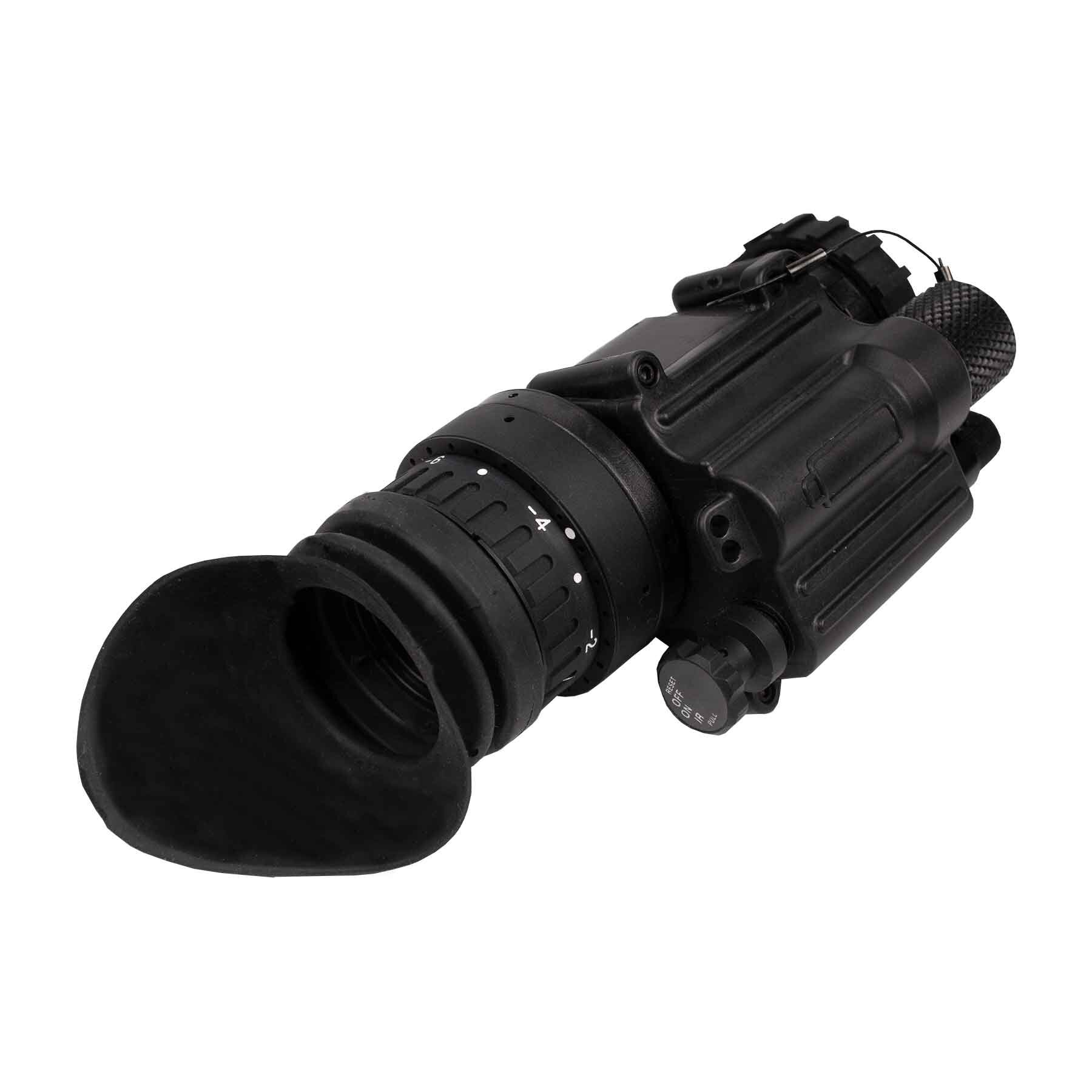 |
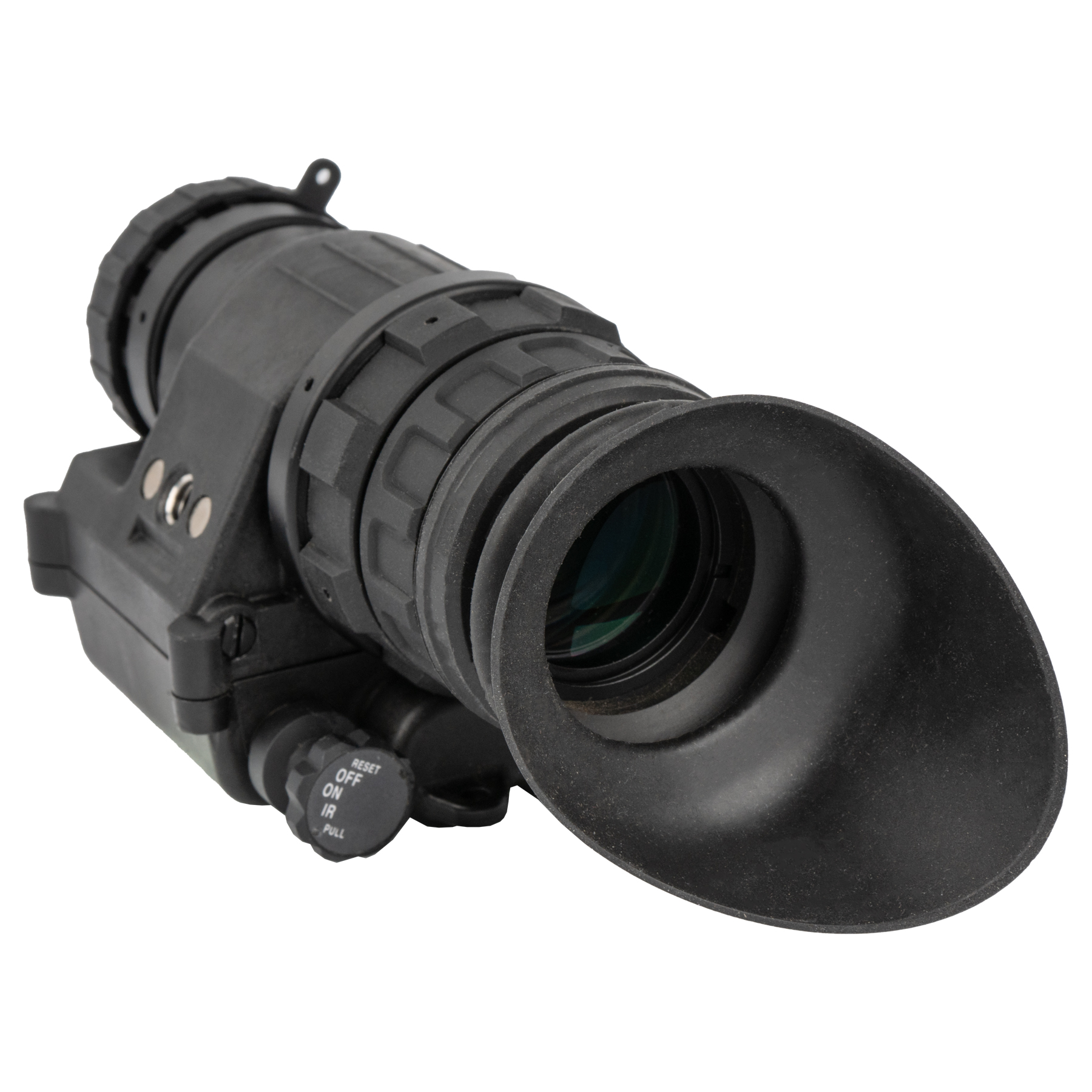 |
ACTinBlack, Dual Tube Night Vision System (DTNVS)
The ACTinBlack DTNVS binocular night vision system utilizes I² technology and is designed for terrestrial use. The unit is available with white or green phosphor.
Model features
-
40° field of view and focus range from 25 cm to infinity.
-
Standard image magnification of 1x, but an optional 3x magnification lens is available.
-
Resolution of 64 pairs of lines per mm.
-
Manual interocular adjustment and diopter adjustment range of -6 to +2.
-
Built-in IR illuminator with on and low battery indicators in the field of view, automatic bright light shut-off function.
-
Powered by a single CR123A battery, which has an approximate battery life of 25 hours at room temperature.
-
Overall dimensions are 3.07 x 4.05 x 4.25 inches, weight is from 0.915 pounds depending on optics and tubes.
-
The operating temperature range is -22...122°F, and storage is possible in the range of -58...158°F.
-
The DTNVS is MIL-STD-810 compliant, has an IP68 liquid ingress protection rating, is waterproof to a depth of 66 feet for two hours, and is salt water corrosion resistant.
-
Compatible with modern mounting systems such as Wilcox G-24 and Norotos INVG.
Night Vision Devices, Inc. BNVD Binocular Night Vision Device – Single Gain
Night Vision Devices, Inc./BNVD is a Single Gain binocular night vision devices utilize I² technology and is designed for land and marine use.
Model Features
-
40° field of view and focus range from 25 cm to infinity.
-
Standard image magnification is 1x, but an optional 3x magnification lens is available.
-
Resolution of 64-81 pairs of lines per mm.
-
The gain adjustment range for the fixed gain system is over 5500 FL/FL, and for the adjustable gain system: from 0 FL/FL to over 5500 FL/FL.
-
Interpupillary adjustment range of 51-76 mm and diopter adjustment range of -6 to +2; target identification range varies.
-
Built-in IR illuminator with spot/flood light functions and automatic bright light cutoff.
-
Operates on lithium, alkaline and Ni-MH batteries with an approximate life of 20+ hours for alkaline and 40+ hours for lithium, and features a visual battery charge indicator.
-
Overall dimensions are 4.3 x 4.2 x 3.3 inches and weight is 1.23 pounds.
-
The operating temperature range is -60...125.6°F, and storage is possible in the range of -60...185°F.
-
BNVD-SG meets IP68 (immersion at 66 feet for two hours) and MIL-STD-810G standard for shock resistance, as it can withstand a drop from a height of one meter in its carry case without damage.
-
The BNVD-SG has an expected service life of 12,000 to 15,000 hours depending on use and maintenance, with the lens lasting 12,000 to 15,000 hours and the tube lasting up to 10,000 hours.
-
Compatible with Wilcox and Norotos Lo Sto helmet mounts.
|
Binocular offerings from Punisher |
|
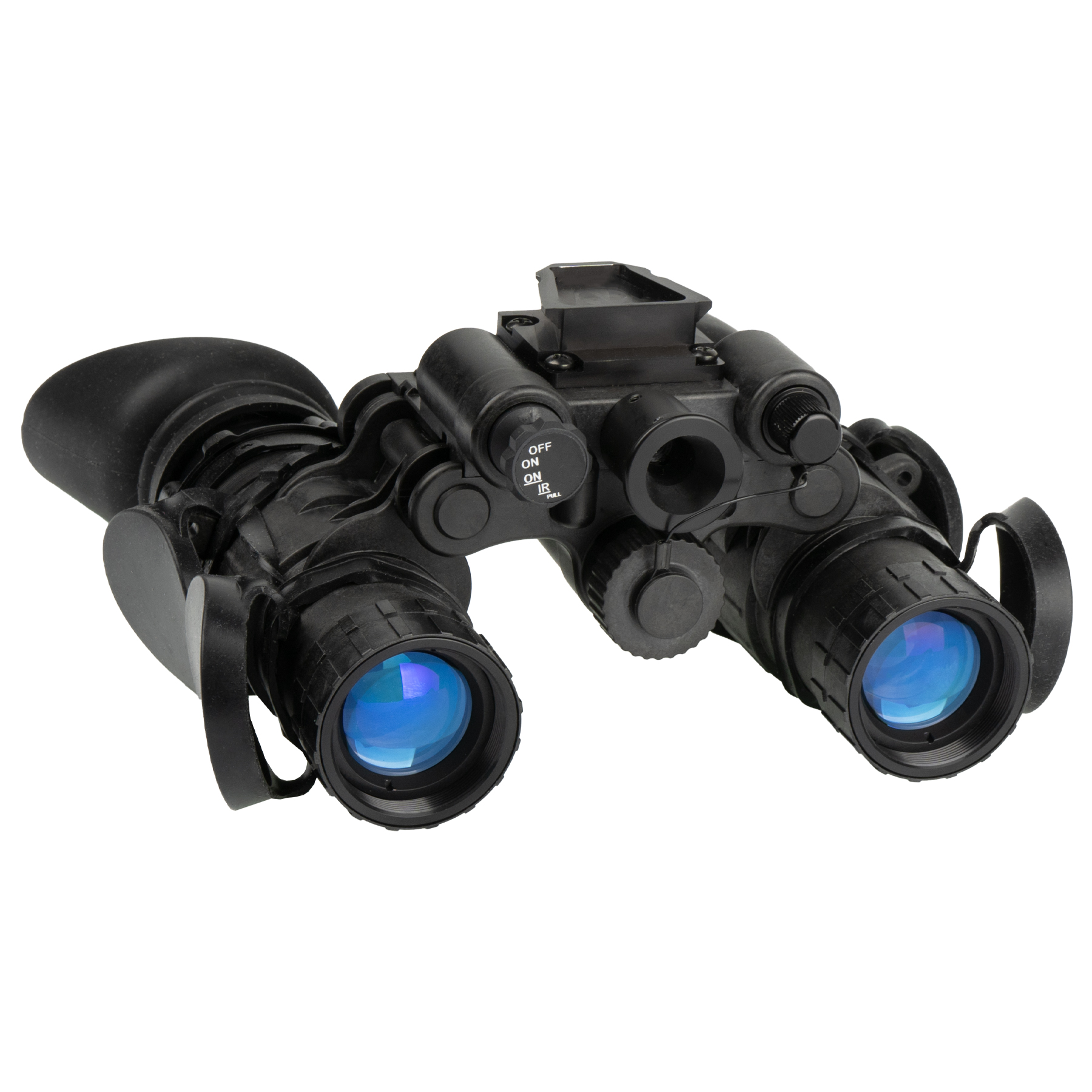 |
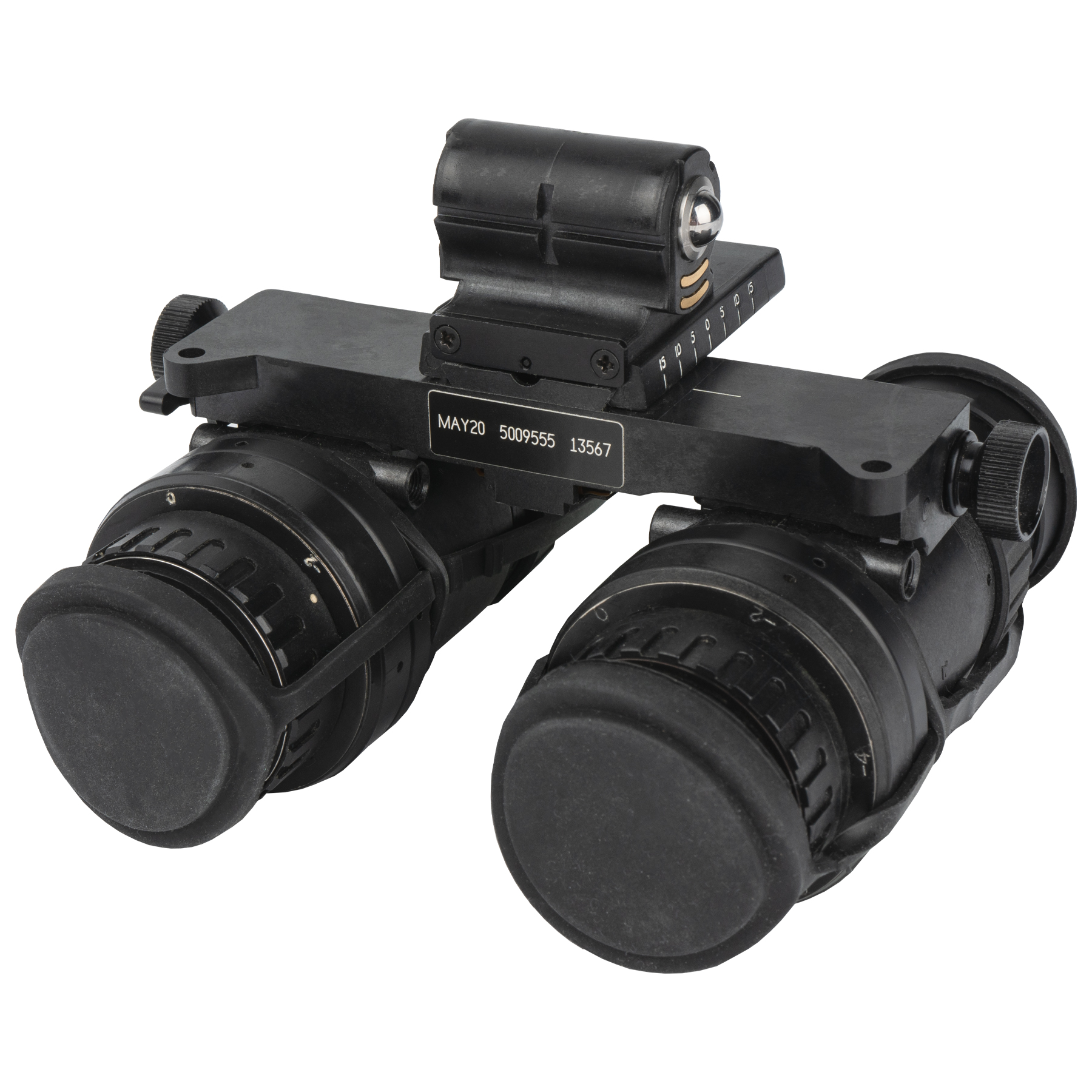 |
Conclusions
Night vision technologies provide improved vision, sensitivity, and awareness to users operating in low-light or completely unlit environments.
In various configurations and applications, night vision technologies can be useful for military, law enforcement, fire departments, and emergency medical services.
The devices can enhance vision for evidence collection, surveillance, border patrol, navigation in smoke-filled environments, and search and rescue.
All NVs require some ambient light, which can be moonlight, starlight, or artificial light. In the absence of ambient light, the user must install an infrared light source that will also be visible to other NV users on the site.
Specifications such as focusing range, resolution, price, weight, and field of view depend on the specific device and manufacturer.
Users considering the purchase of night vision devices are advised to examine the general capabilities and limitations of each product in relation to the operational needs of their service.
The specific operation or application, including deployment methods and operating environment, should guide the requirements of the device, such as resolution, range, functionality in no or low light conditions, field of view, etc.
Source: SAVER Night Vision Devices Market Survey Report
If you need help with the choice of NVD — contact 📞 our managers — they will provide comprehensive advice!

























































































































